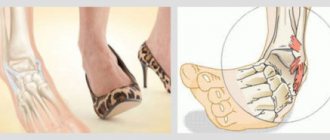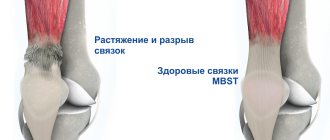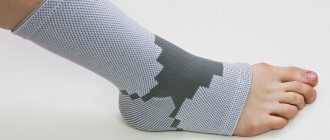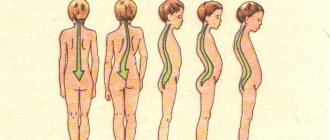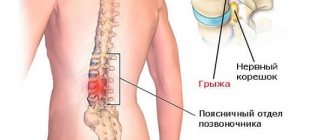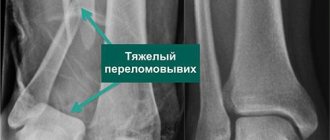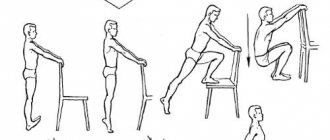The ankle is part of the ankle joint. It is also often called the ankle. Visually, this is a recognizable bone on both sides of the foot above the heel. The ankle at the ankle joint is the area where the ligaments are attached. When moving, it simplifies the turns of the foot and corrects the direction of movement. The ankle is the vulnerable part of the ankle. Increased loads can provoke its pathologies, and injuries also often occur.
Features of injury
Ankle injuries occur very often. First of all, they are associated with high loads that the joint of the foot and lower leg has to withstand during human movement. In most cases, when exposed to force, bone tissue is not destroyed, but partial or complete rupture of the ligaments occurs.
Only under high loads does the bone tissue break down, leading to a fracture. Typically, the risk of such injuries increases among professional athletes and people who engage in heavy physical work. Ankle fractures often occur when the ligaments of the ankle joint are weak.
To prevent ankle injuries, you should wear comfortable shoes. Constantly wearing high-heeled shoes causes problems. A sedentary lifestyle and sedentary work weaken the ankle ligaments.
Anatomy
The human ankle has the shape of two bony processes. The lateral (outer) ankle is a formation at the lower end of the fibula, and the medial (inner) is in a similar part of the tibia. The fibula and tibia form the tibia, the part of the leg from the foot to the knee. The ankle is a formative element of the ankle joint - a movable joint between the lower leg and foot.
The lower ends of the bones of the lower leg, including the ankles, form the upper part of the ankle joint and, like the fork, which is clearly visible in the photos demonstrating the structure of this joint, cover its lower part - the articular surface of the talus of the foot. A durable bone fork allows you to:
- evenly distribute the high load (weight of the human body) on the bones of the foot;
- move the lower leg relative to the foot in different directions.
Thus, the medial ankle is responsible for turning inward without lifting the foot off the floor, and the lateral ankle is responsible for turning outward. The “fork” formed by the outer and inner ankles ensures high mobility of the foot during flexion and extension, which provides a person with free movement. At the same time, this structure significantly limits the lateral abduction of the foot - this protects the bones and ligaments from excessive stress.
The articular surface of the outer and inner ankles is covered with cartilage, which ensures the free sliding of the bones of the joint relative to each other, protecting them from injuries associated with friction.
The ankle is surrounded by ligaments - dense and at the same time elastic formations, consisting of bundles of connective tissue that hold the bones of the skeleton in their normal position. Without ligaments, the supporting function of the skeleton would be impaired - the bones would simply “move apart” at the places of their articulations.
Attached to the medial malleolus is the medial ankle ligament, which connects the tibia of the leg to the talus of the foot.
On the lateral malleolus are:
- the anterior and posterior tibiofibular ligament, connecting the external malleolus to the corresponding surfaces of the tibia;
- anterior and posterior talofibular ligaments, which provide connection to the talus;
- The calcaneofibular ligament connects the outer malleolus (and by extension the fibula) to the calcaneus.
Most often, the cause of decreased mobility in the ankle area is damage to the ligamentous apparatus. The most common injury to the ankle is traumatic injury.
Ligament damage
When sprained during movement, damage to the ankle ligaments occurs. In severe cases, their complete or partial rupture may occur.
Damage to the ankle ligaments in the ankle area is always accompanied by micro-tears of the connective tissue. Because of this, hemorrhages and accumulation of intercellular fluid occur, which leads to pain. They intensify when walking and standing for long periods of time.
Minor sprains can occur from walking for long periods of time without twisting or impacting the foot. The risks increase if people lead a sedentary lifestyle. The following signs indicate significant ligament damage:
- Swelling of the ankle, and in severe cases of the entire lower leg.
- Loss of ankle mobility.
Arthritis of the ankle
Ankle arthritis on x-ray
Sometimes an injury to any ankle leads to disruption of the integrity of the skin on it. This can cause infection of the soft tissue area with infectious agents (seen in the photo).
As you know, ligaments have a very poor blood supply, which slows down the development of the infectious process. Within 10-15 days, inflammation occurs in the area of injury, which affects the synovial membranes of the talus. Gradually, inflammation leads to destruction of the articular surface, impaired movement in the joint and its ossification.
Signs of arthritis:
- Redness of the skin over the joint.
- Swelling of the joint.
- Pain with movement and at rest.
- The skin over the joint is hot.
Interesting! Sometimes small bumps appear in the area of the inflamed joint, which indicate reactive rheumatoid arthritis. This sign requires urgent consultation with a specialist, because delay can affect the effectiveness of treatment.
Fractures
Ankle fractures can occur for a variety of reasons. Direct injuries occur upon impact. Most often, this occurs during an accident when a heavy object accidentally falls on the leg. Indirect fractures are more common. They usually occur when the leg twists. In this case, the injury is accompanied by the formation of bone fragments and dislocation of the foot and sprained ligaments. As a rule, it occurs when falling on ice or a slippery floor, walking on an uneven surface, etc.
If the fracture did not cause displacement of bone fragments and severe sprain of the ligaments, then swelling and tolerable pain are noted against the background of difficulties with joint mobility. In more severe cases, there is intense pain and an absolute inability to step on the injured leg. In addition to swelling, bruising is often present in the ankle area. With an open fracture, there is a wound through which bone fragments are visible.
Interesting Facts
The structure of the human leg
For the first time, a detailed sketch of the structure of the lower limb was drawn by Leonardo da Vinci. His drawings are still popular among modern anatomists. He imagined the human leg as a mechanical formation that has its own laws of movement and structure. This allowed us to open our eyes to the features of the articular surfaces of the ankle and knee joint.
Leonardo described all the names of anatomical structures in Latin. The artist wrote inscriptions in Latin even near the smallest area, describing its shape and structure.
He believed that a description of the anatomy of any part of the human body without pictures and illustrations is uninformative. After all, it is better to see once than to hear or read hundreds of times.
The artist made the image of the foot so detailed and natural that one can easily examine the structure and study the biomechanics of the foot.
Even modern photographs cannot characterize the location of a person’s ankle and its structure in as much detail as the artist’s drawings.
Features of treatment
If, after examination by a doctor and diagnostics, minor ligament damage is confirmed, then it is necessary to ensure maximum rest for the sore leg. Cold compresses are indicated. Ice is applied to the sore spot during the first 24 hours after injury. If necessary, painkillers are prescribed and orthoses are worn to fix the ankle. In severe cases, when the ligaments are torn, surgical treatment is performed.
In case of a fracture, a plaster cast is required. Strong painkillers are prescribed to relieve pain. If bone displacement is confirmed, surgery is performed. An ankle fracture requires professional treatment. Otherwise, foot function may be impaired.
With correct treatment, it will take 6-8 weeks for the bones to heal in an ankle fracture. During this period it is necessary to wear a cast. You should also avoid any stress on the injured leg. After the cast is removed, you will need to wear special shoes for a certain time and periodically take x-rays to monitor the recovery. The duration of complete rehabilitation usually takes about a year. During the recovery period, calcium-rich foods should be included in the diet. Massage and physical therapy are also indicated.
Diagnostic methods
To further diagnose the causes of ankle pain, it is recommended to immediately contact a traumatologist who will prescribe one of the following types of examination:
- ultrasound examination;
- radiograph;
- computed tomography.
At the first stage, it is recommended to provide medical assistance.
A doctor is needed in the following cases:
- Sharp pain in the ankle with inability to move independently.
- Noticeable deformation of the foot (dislocation, eversion, sprain).
- A visible fracture of the ankle with protruding parts and bone fragments.
- For any systematic pain in the ankle with redness of the skin in this area, swelling, if there is constant crunching in the ankle, there are bruises and fever.
Swelling of the ankles
A fairly common pathological condition is swelling of the ankles. They occur without exposure to any traumatic factor. In most cases, this is due to excess weight and a sedentary lifestyle. Due to increased stress, edema often occurs during pregnancy. When such symptoms appear, it is important to dose out physical activity and drink less fluid.
Swelling of the ankles can be a symptom of various diseases: heart, kidney and liver. In addition, urinary tract infections are a common cause of pathology. Swelling of the ankles may indicate the onset of venous insufficiency. In this case, after a certain time, changes in the appearance of the skin will appear, and in severe cases, ulcers will appear and the risk of infection will increase.
If swelling of the ankles occurs, you should immediately contact your local physician. To treat swelling of the ankles, the cause of the pathological condition must be established. After this, measures are taken to treat the specific disease. In any case, therapeutic exercises can stabilize the condition. It is also important to wear comfortable orthopedic shoes when swelling occurs. For persistent swelling, herbal diuretics are prescribed. Foot baths and massage are recommended at night.
The purpose of the body part called the ankle
Where is it? And what functions does it perform? Now we will tell you everything in detail. Because Homo sapiens is an upright walking species, the load on our spine and legs is distributed differently than in other mammals. In particular, most of a person's weight after he learns to walk falls not on his shoulders and back, but on his legs. They experience enormous stress every day (the bones themselves can withstand pressure of 1,600 kilograms). Through the ankle there is a transfer of weight from the leg itself to the foot. And this part of the body is a kind of shock absorber.
Anatomically, it is a process of the lower leg. Or rather, two processes, because there are two ankles - lateral and medial. The first is the distal end of the fibula, which forms the tibia. So, where is the medial malleolus? In the area where the tibia meets the foot. They run parallel to each other and, in general, form the angle that is located at the junction of these parts. Externally, the ankle is a bony outgrowth visible from the outside and inside of the leg. In some people it is pronounced, in others it is barely noticeable, but every person has it.

